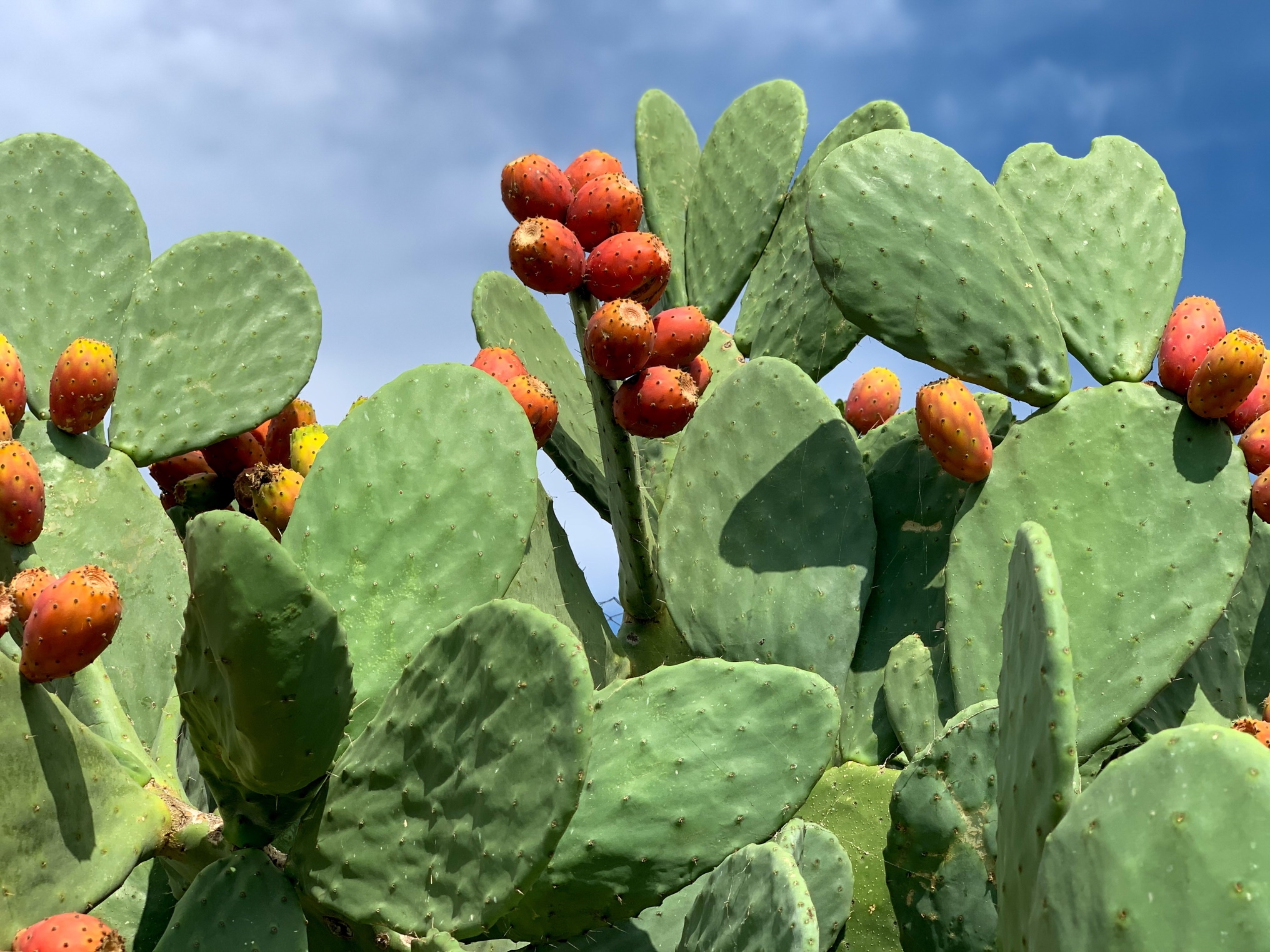

USED PARTS OF THE PLANT:
stems and fruits
CURATIVE PROPERTIES:
Nutritious, metabolic, harmonizing, sedative, antioxidant, detoxifying, anti-asthmatic, anti-inflammation, dermato-regenerating
USE IN TRADITIONAL PERUVIAN MEDICINE:
BRIEF DESCRIPTION OF THE PLANT AND ITS PRESENCE
Nopal is a desert cactus that belong to the Opuntia family. It is a very beautiful and precious plant. Its homeland is Mexico, where there are most species. It grows all across the American continent. It grows in the sandy and calcareous soil, in dry, windy, but sunny locations. It grows up to 3-6 meters tall. Thanks to the fleshy leaves that absorb enough of water, the plant survives and blooms even in the harshest conditions. The beautiful flowers of Nopal are considerably large, and have many colors: yellow, pink, and violet. They open up only at night, they remain closed during the day in order to keep as much water as possible. The flowers form elliptic fruits, yellow, pink, violet, and green. They are 10-15 cm big, and sweet. The young sprigs of Nopal are consumed as vegetables. The fruits are highly valued food, and used to be one of the key elements of the diet of the original inhabitants of the America. Later, they were (and still are) commonly eaten by the inhabitants of Mexico, and other countries of North and Central America. The fruits can be cooked or eaten raw. They contain vitamin C and beta-carotene which are antioxidants – substances that help to protect our body against the negative influence of free radicals. It is a beautiful, precious, and extremely useful plant.
MORE INFORMATION
The fruits of Nopal are rich in mineral ingredients, especially: calcium, magnesium, kalium, phosphor, sodium, zinc, selenium, aluminum, manganese, vitamins (A, B1, B2, B3, B5, B6, B12, and C), carbohydrates, monosaccharides, disaccharides, polysaccharides (mainly pectins, cellulose, dissoluble and non-dissoluble fiber).
It also contains amino acids, among others, 8 very important ones – the ones that body cannot produce on its own, and has to obtain them from the products that contain them.
Because of its properties and the wide range of application in medicine, Nopal is present on the list of medical plants made by WHO. Thanks to a thorough research, its medical properties have been confirmed.
It has antioxidant properties, it regulates the level of glucose in blood, reduces the level of lipids, regulates the body mass, purifies the colon, restores healthy digestion. It has a beneficial influence on sugar and fats absorption in the digestive system, it lowers the caloric value of dishes, and therefore speeds up the metabolism, which is of great help when we reduce the body weight. The high content of fiber gives the feeling of satiety. Nopal in the natural way supports the body cleansing. The fiber puffs up and stops the appetite, and removes the food remains and fecal matter concrement helping digestion and it drain cleans the intestines, eliminating with the feeling of repleteness.
The healthy functioning of our body depends on the proper functioning and purity of our intestines.
Fiber together with proteins has the ability to bond fats, and because of that the body absorbs less of them. It normalizes the work of stomach, liver, pancreas, and intestines. Nopal helps to remove the toxins from the body. Those toxins come from the unhealthy diet, but also smoking and drinking. Because of the beneficial influence on fats metabolism, it reduces the fraction of LDL cholesterol (“bad” cholesterol), and increases the fraction of HDL cholesterol (“good” cholesterol). It reduces the excess of gastric acid, and protects the mucosa of digestive tract, therefore it prevents the ulcer sickness. The mucous substances help to heal damages in the digestive tract. It cleanses the intestines thanks to the content of dissoluble and non-dissoluble fiber. Fiber absorbs water and helps to move the food through the digestive tract, and also helps with defecation. Nopal is used in prophylaxis of obesity. It prevents constipations , and protects the intestines.
The content of berberin soothes the nerves and has anti anxiety properties. It reduces depression, increases immunity to tiredness and exhaustion. The content of mineral substances rises the energy, it is recommended for the tired, the faint, the weary, and also ones who try to recover health after a wasting disease. It improves the condition of the skin. Nopal lowers the level of glucose in blood and prevents hyperglycemia (high level of sugar in blood). Although it does not treat diabetes, thanks to the content of pectin, cellulose, and different kinds of plant-based mucous it impacts on the glucose absorption, and helps to control its level in blood. The amino acids and antioxidants present in Nopal lower the risk of heart attack, cardiovascular illnesses, they boost the efficiency of arteries and help to avoid sclerosis. Nopal can also be used as support in case of heart blood supply disorders, and central nervous system disorders.
In traditional Peruvian medicine of the native inhabitants, Nopal is used to treat illnesses of upper airways, asthma, migraine, headache, and also to treat burns and edema of limbs.
Nopal is used in food, pharmaceutical, and beauty products industries.
The cosmetic companies make use of its perfect moisturizing and protective properties in production of creams, shampoos, conditioners, and soap.
It is gluten-free.
USE AND MOST COMMON DOSAGE
3 times a day, a few minutes before the meal, mix 1-2 teaspoons of powder with 200-300 ml of water or juice. It is advisable to use a shaker or a jar to mix and shake it well. It can also be added to flour used for baking bread or rolls.

